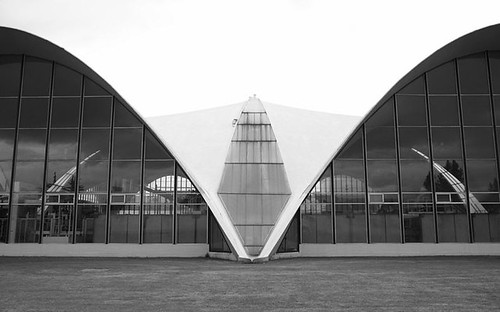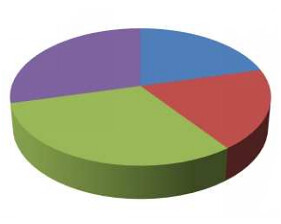We’ve been asked about recommended reading. While there are over 50 references embedded in our Top 10 articles these are ones we agreed likeminded structural engineers should turn to first. Enjoy!
Anderson, J., Silman, R. (2009) “A Life Cycle Inventory of Structural Engineering Design Strategies for Greenhouse Gas Reduction,” Structural Engineering International, March 2009 Issue.
Arup (2010) “Embodied Carbon Study: Study of Commercial Office, Hospital and School buildings,” The Concrete Centre, United Kingdom.
Cole, R., Kernan, P. (1996). Life-Cycle Energy Use in Office Buildings, Buildings and Environment, 31 (4): 307-317
Comber, M.V. & Poland, C. (2013). “Disaster Resilience and Sustainable Design: Quantifying the Benefits of a Holistic Design Approach.” Proceedings, American Society of Civil Engineers- Structural Engineering Institute (ASCE-SEI) Structures Congress, Pittsburgh, PA.
Curran, M. A. (2006). Life cycle assessment: principles and practice. Cincinnati, Ohio, 80.
Fernandez, N. P. (2008). “The Influence of Construction Materials on Life-Cycle Energy Use and Carbon Dioxide Emissions of Medium Size Commercial Buildings” Victoria University of Wellington, Wellington, New Zealand.
Hsu, S. (2010) “Life Cycle Assessment of Materials and Construction in Commercial Structures: Variability and Limitations,” Massachusetts Institute of Technology, Cambridge, Massachusetts.
Kaether, Burridge (2012) “Embodied CO2 of Structural Frames”, The Structural Engineer.
Kneer, E., & Maclise, L. (2008). “Consideration of Building Performance in Sustainable Design: A Structural Engineer’s Role.” Proceedings, Structural Engineers Association of California (SEAOC) Annual Convention.
Konig, H. Kholer, N. Kreissig, J. Lutzkendorf, T. (2010). A life cycle approach to buildings: principles, calculations, design tools. Radaktion DETAIL, Munich.
LEED (2012) Reference Guide for Green Building Design and Construction v4 Draft. USGBC.
Ochsendorf, J., et al. (2011) “Methods, Impacts, and Opportunities in the Concrete Building Life Cycle,” Massachusetts Institute of Technology, Cambridge, Massachusetts.
Preservation Green Lab (2011) The Greenest Building: Quantifying the Environmental Value of Building Reuse, National Trust for Historic Preservation. [Accessed July 11,2014 from http://www.preservationnation.org/information-center/sustainable-communities/green-lab/lca/The_Greenest_Building_lowres.pdf]
Ramesh, T., Prakash, R., Shukla, K.K. (2010) “Life cycle energy analysis of buildings: An overview,” Energy and Buildings, 42 1592-1600.
Simonen, K. (2014) Life Cycle Assesment, New York, Routledge.
Webster, M., Kestner, D., Parker, J., Waltham, M.. (2007) “Deconstructalbe and Reusable Composite Slab,” Winners in the Building Category: Component – Professional Unbuilt, Lifecycle Building Challenge
Read more...
Anderson, J., Silman, R. (2009) “A Life Cycle Inventory of Structural Engineering Design Strategies for Greenhouse Gas Reduction,” Structural Engineering International, March 2009 Issue.
Arup (2010) “Embodied Carbon Study: Study of Commercial Office, Hospital and School buildings,” The Concrete Centre, United Kingdom.
Cole, R., Kernan, P. (1996). Life-Cycle Energy Use in Office Buildings, Buildings and Environment, 31 (4): 307-317
Comber, M.V. & Poland, C. (2013). “Disaster Resilience and Sustainable Design: Quantifying the Benefits of a Holistic Design Approach.” Proceedings, American Society of Civil Engineers- Structural Engineering Institute (ASCE-SEI) Structures Congress, Pittsburgh, PA.
Curran, M. A. (2006). Life cycle assessment: principles and practice. Cincinnati, Ohio, 80.
Fernandez, N. P. (2008). “The Influence of Construction Materials on Life-Cycle Energy Use and Carbon Dioxide Emissions of Medium Size Commercial Buildings” Victoria University of Wellington, Wellington, New Zealand.
Hsu, S. (2010) “Life Cycle Assessment of Materials and Construction in Commercial Structures: Variability and Limitations,” Massachusetts Institute of Technology, Cambridge, Massachusetts.
Kaether, Burridge (2012) “Embodied CO2 of Structural Frames”, The Structural Engineer.
Kneer, E., & Maclise, L. (2008). “Consideration of Building Performance in Sustainable Design: A Structural Engineer’s Role.” Proceedings, Structural Engineers Association of California (SEAOC) Annual Convention.
Konig, H. Kholer, N. Kreissig, J. Lutzkendorf, T. (2010). A life cycle approach to buildings: principles, calculations, design tools. Radaktion DETAIL, Munich.
LEED (2012) Reference Guide for Green Building Design and Construction v4 Draft. USGBC.
Ochsendorf, J., et al. (2011) “Methods, Impacts, and Opportunities in the Concrete Building Life Cycle,” Massachusetts Institute of Technology, Cambridge, Massachusetts.
Preservation Green Lab (2011) The Greenest Building: Quantifying the Environmental Value of Building Reuse, National Trust for Historic Preservation. [Accessed July 11,2014 from http://www.preservationnation.org/information-center/sustainable-communities/green-lab/lca/The_Greenest_Building_lowres.pdf]
Ramesh, T., Prakash, R., Shukla, K.K. (2010) “Life cycle energy analysis of buildings: An overview,” Energy and Buildings, 42 1592-1600.
Simonen, K. (2014) Life Cycle Assesment, New York, Routledge.
Webster, M., Kestner, D., Parker, J., Waltham, M.. (2007) “Deconstructalbe and Reusable Composite Slab,” Winners in the Building Category: Component – Professional Unbuilt, Lifecycle Building Challenge














